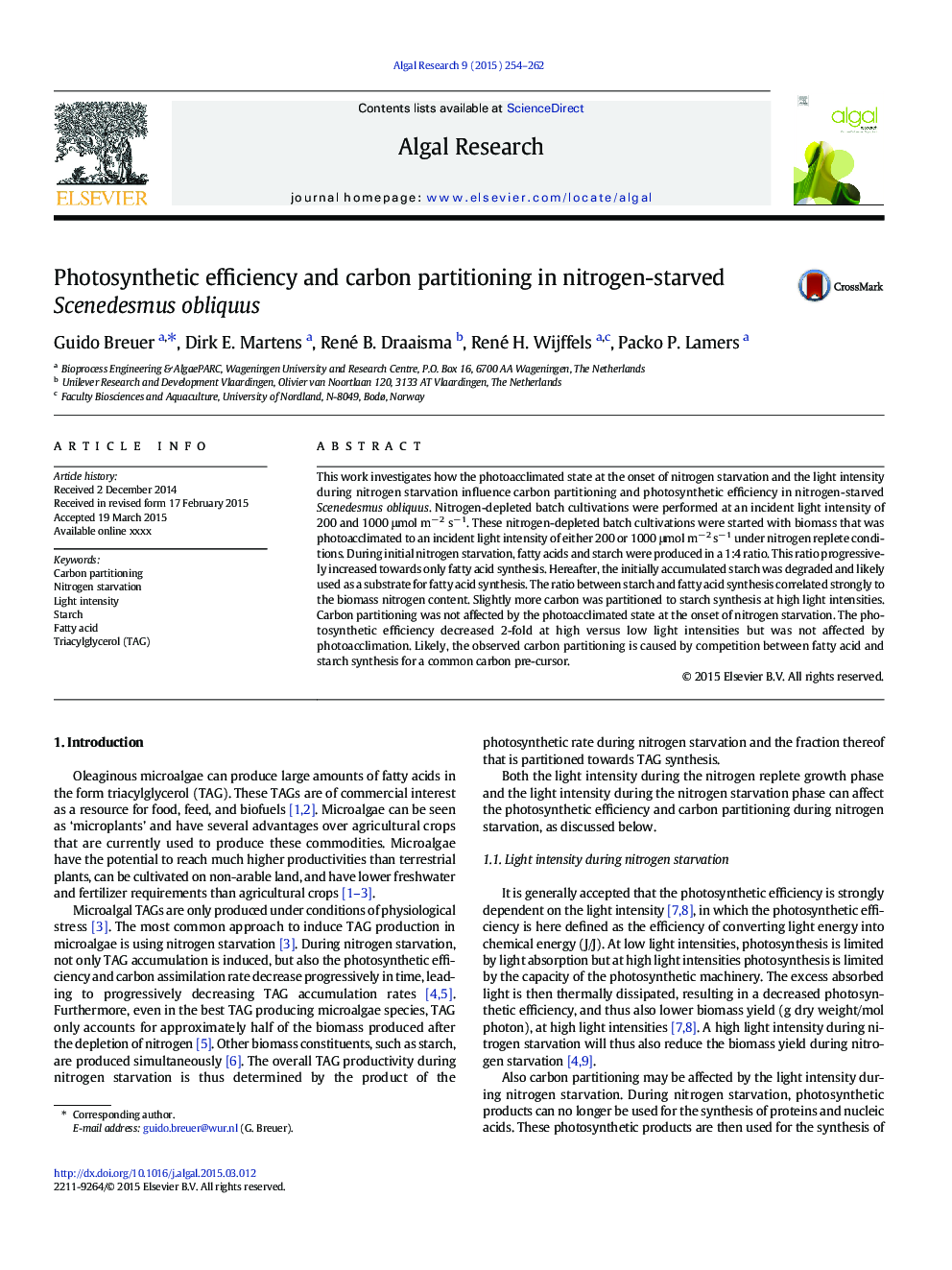| Article ID | Journal | Published Year | Pages | File Type |
|---|---|---|---|---|
| 8088180 | Algal Research | 2015 | 9 Pages |
Abstract
This work investigates how the photoacclimated state at the onset of nitrogen starvation and the light intensity during nitrogen starvation influence carbon partitioning and photosynthetic efficiency in nitrogen-starved Scenedesmus obliquus. Nitrogen-depleted batch cultivations were performed at an incident light intensity of 200 and 1000 μmol mâ 2 sâ 1. These nitrogen-depleted batch cultivations were started with biomass that was photoacclimated to an incident light intensity of either 200 or 1000 μmol mâ 2 sâ 1 under nitrogen replete conditions. During initial nitrogen starvation, fatty acids and starch were produced in a 1:4 ratio. This ratio progressively increased towards only fatty acid synthesis. Hereafter, the initially accumulated starch was degraded and likely used as a substrate for fatty acid synthesis. The ratio between starch and fatty acid synthesis correlated strongly to the biomass nitrogen content. Slightly more carbon was partitioned to starch synthesis at high light intensities. Carbon partitioning was not affected by the photoacclimated state at the onset of nitrogen starvation. The photosynthetic efficiency decreased 2-fold at high versus low light intensities but was not affected by photoacclimation. Likely, the observed carbon partitioning is caused by competition between fatty acid and starch synthesis for a common carbon pre-cursor.
Related Topics
Physical Sciences and Engineering
Energy
Renewable Energy, Sustainability and the Environment
Authors
Guido Breuer, Dirk E. Martens, René B. Draaisma, René H. Wijffels, Packo P. Lamers,
